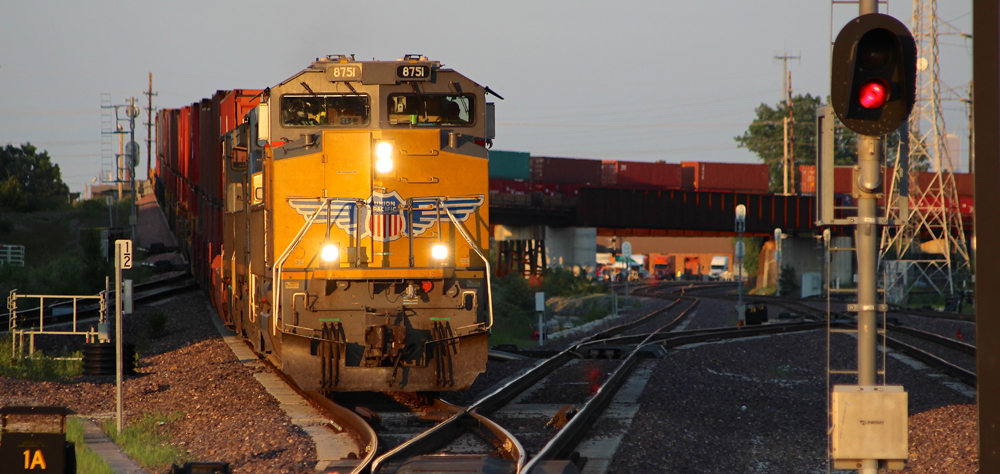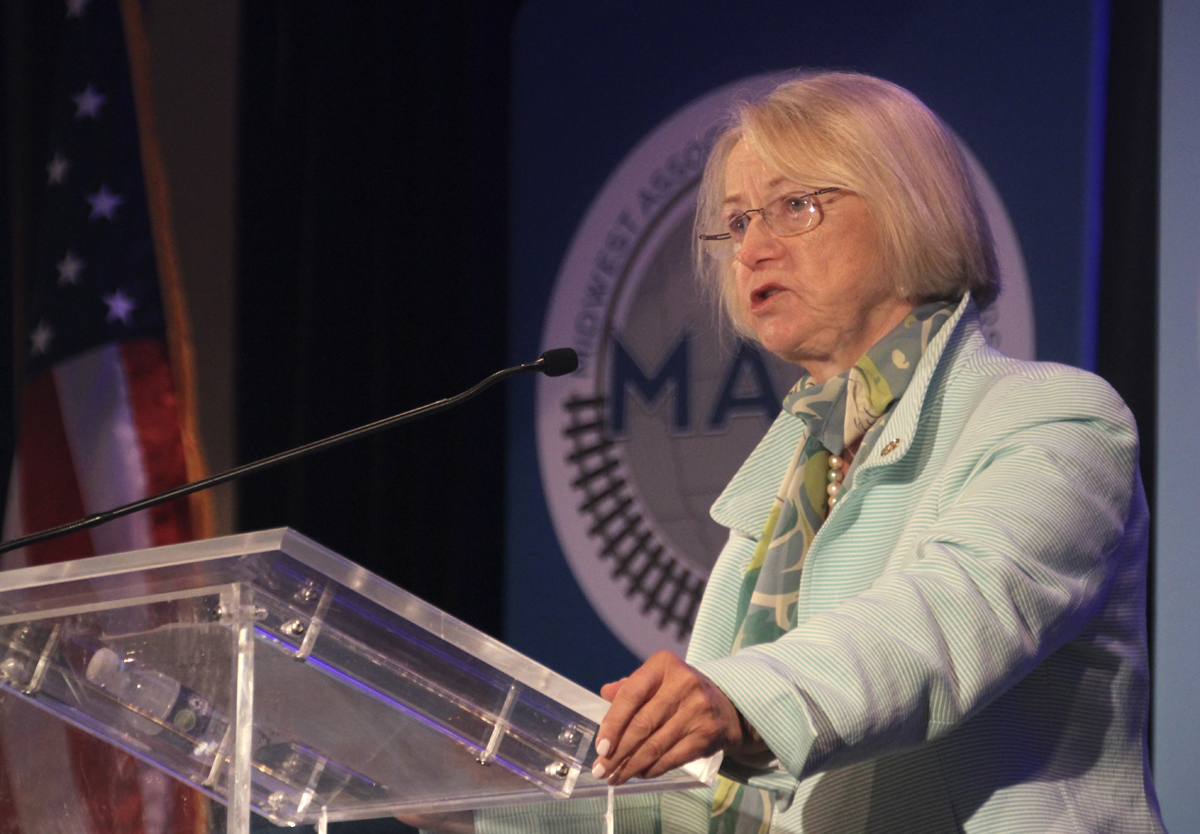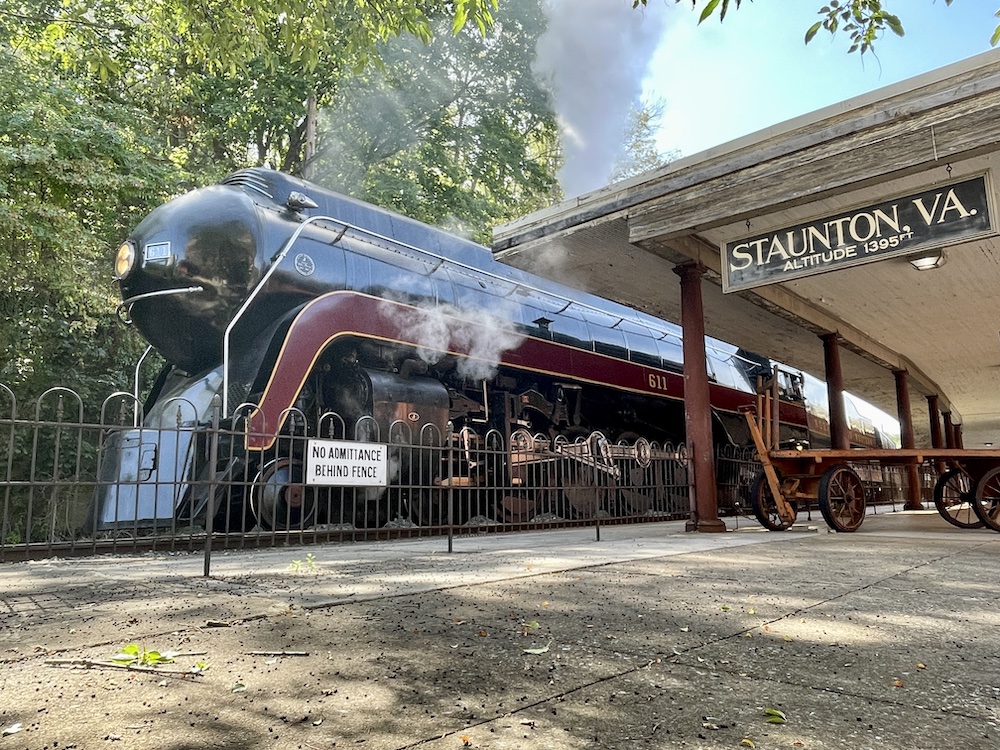
OMAHA, Neb. — With a goal of reducing greenhouse gas emissions 26% by the end of the decade, Union Pacific is working to improve locomotive fuel efficiency, plans to roll out battery-electric locomotives soon, and is exploring alternatives to the diesel-electric.
“We do not plan on buying any new locomotives — unless it’s battery-electric locomotives for testing out that concept, in which case I think we will be on top of that in the very near future,” CEO Lance Fritz said during an investor day presentation on Tuesday.
UP plans to introduce battery-electric switching locomotives — first in California and then in yards and local operations across the system — and is working with Wabtec and Progress Rail on road locomotives that will reduce emissions.
“We’re exploring alternate fuels where it makes sense,” says Shane Keller, senior vice president of engineering and mechanical. “We’re finalizing our strategy to test and deploy battery-electric locomotives in our yard and local operations in California.”
Last year, Progress Rail unveiled its EMD Joule battery electric switcher, a 3,000-hp unit that can run for up to 24 hours. This year BNSF Railway tested Wabtec’s FLXdrive battery electric road locomotive in California. The locomotive reduced fuel consumption of a conventional locomotive lash-up by 10%, and Wabtec officials believe a production version with more batteries can reduce fuel use by up to 30%.
Meanwhile, UP plans to upgrade or install energy management systems — including Wabtec’s Trip Optimizer and New York Air Brake’s LEADER (Locomotive Engineer Assist/Display and Event Recorder) — on its entire high-horsepower road fleet by the end of this year, says Eric Gehringer, executive vice president of operations.
The systems automatically control throttle and dynamic brake settings to reduce fuel use by as much as 10%. They also can automatically idle trailing units in a locomotive consist whose horsepower is not needed to maintain track speed.
Improving the railroad’s fuel efficiency is critical from a competitive standpoint as diesel trucks get more efficient and electric trucks and hydrogen fuel cell rigs are entering service, UP officials say.
And by the end of 2022 UP will modernize an additional 300 road locomotives, making them more fuel efficient and more reliable. Unlike an overhaul — which simply replaces worn components with identical but new parts — a modernization involves upgrading components, including control systems, Keller says.
UP says it modernized nearly 175 units last year at its Jenks Shop in North Little Rock, Ark., work that allows the locomotives to meet more stringent emissions standards.
The modernized locomotives have been twice as reliable as new units, Keller says. “They’ve been outstanding in their performance,” he says.
UP also has increased its use of renewable and biodiesel fuel to reduce greenhouse gas emissions.














Maşuk Uyducu olarak uydu çanak anten arızalarınızda bir telefon uzağınızdayız.
with so many locomotives presently stored, how likely is it that novel technology will supplant those units? There is much useful life left and it would be even more wasteful to cast those aside, in favor of trendy and yet unproven tech. Science moves at a slow pace, for good reason. Battery storage makes sense as a regenerative braking technology, especially in mountains. Design these units as battery packs, without cabs. Think of a new style of B unit. If you need to hostle them, plug in a remote control unit, ala cell phone. I am skeptical of any significant evironmental savings. After all, the laws of thermodynamics have yet to be repealed. Cheers.
The people in America who control the future of transportation including cars, trucks, buses, and trains have gone off the deep end with their dreams of all electric operating systems, thinking it will reduce reliance on fossil fuels. Do they think electricity just falls out of the sky?
Every time one energy source is used to produce another energy source there are losses in transmission. The electricity required to operate all of these vehicles will have to come from somewhere. That means more fossil fuels will be consumed to compensate for transmission losses as well as the increased consumption of electricity.
As it stands today, the electrical grid is vulnerable to a variety of factors that could cause it to fail at any time. Short of major investments in the system, there won’t be enough electricity to drive all the requirements. All electric is a pipe dream at best.
While there are valid points in seeing electrical operation as too expensive if viewed from the recently traditional national electric grid perspective, there are other ways of generating ad distributing electric power. And there are major research projects in solving them storage issue. In Bordeaux they use an electrical power system in the city center that eliminates wires and has at station recharging for trams through spots at stations that is controlled by a computer recognition of when the tram is there.
If it is true that electrification costs 1m per mile, why not a hybrid system that recharges for overhead once every 4 or 5 miles then the cost is 200K per mile or less. Rail right of ways are a massive site for solar charging etc. etc. All that is needed is for some partially non conventional engineering thinking and a little risk taking entrepeneurial financial thinking to make these or some other method making rail lots more electrically feasible. Current big business thinking is not going to do it.
“Cutting employees has been a focus since the 1960s ”
Actually, cost-cutting has been a focus since 1827 [when the B&O was chartered]. Labor and Fuel are the two largest variable costs. Railroads will always attempt to reduce these, even at the price of reduced service effectiveness.
“Why not go full electric?” Here’s why not: because the capital cost for electrification is at least $1m per track mile. And $4m for new electric road power.
There are no routes in America for which electrification is justified – unless oil prices increase dramatically. Even $100 per bbl was insufficient to stoke any interest in wires. Current oil price is $65/bbl. Last time it was $100 was in 2015. https://markets.businessinsider.com/commodities/oil-price?type=wti&op=1
So railroads will spend umpteen millions of capital on expensive and complicated diesel/battery locos for less than 30% savings in oil cost and a small reduction in environmental degradation. These locos will last 10 to 15 years and then be done all over again, –but I’ll bet as full electrics. Why not go to full electrics (maybe even with government support for some of the infrastructure). Cut out the cost of hermaphrodite engines and support systems at a time when the coast of borrowing is at a near all time low and move to where the real future will be? Senior management is supposed to look to the real future. Where is E H Harriman?
Mark. We all know that railroad management would love to go to autonomous operations. Cutting employees has been a focus since the 1960s and accelerated with deregulation in the 80s. However, I believe that no tertiary means of transportation should be run robotically because there are so many variables. Example: Would an autonomous vehicle (rail or highway) know the difference between a deer or a person in its path? I would know that if a deer or other animal was struck, an emergency stop of the train and a report would not be warranted. An attempt to warn a person or prevent an accident definitely would be warranted as well as appropriate action in the event that an accident could not be avoided. Not only that, mechanical breakdowns do occur and having someone on board to set out a defective car or make a field repair (replace a knuckle or hose) is more expedient than sending someone to meet the train, especially in remote locations. And any time there is a highway crossing activation failure malfunction, someone has to be there to flag traffic. It’s the law.
If there are any locomotive engineers on this forum or any who understand locomotive electronics, please explain what the locomotive engineer’s role is running a train with Trip Optimizer and LEADER. Believe me, I hate the thought of autonomous trains but these technologies seem to come awfully close tongoing there.
There are plenty of my union brothers that follow Newswire, but if currently employed, any candid conversation would lead to their becoming a prime target for management retaliation. You have to be an authenticated member of a private blog to see the minus and plus aspects of these systems and the reality of running trains. Mr. Fritz and his ghost writer are prime candidates for the Pulitzer Prize for fiction